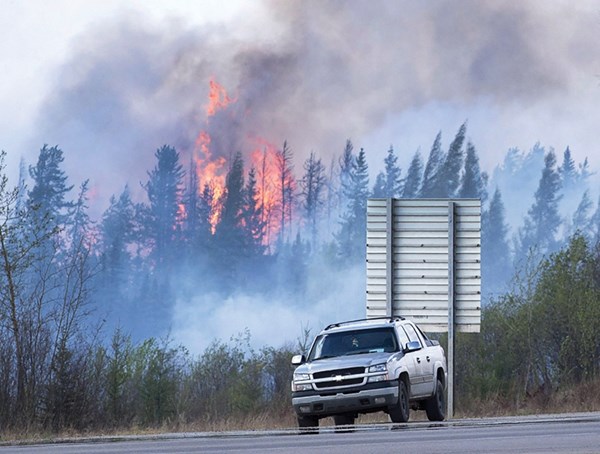For Squamish resident Wilf Grolman, the fires raging in Fort McMurray are more than an abstraction in the news. For him, the images mean watching the city where he works going up in smoke.
Since April of 2012, Grolman has spent the majority of his time living and working at various jobs in the oil and gas industry in and around Fort McMurray.
The wildfire, which flared up May 1, forced a mandatory evacuation order for all 88,000 residents on May 3. The fire spread over 156,000 hectares and destroyed 2,400 buildings, according to Alberta officials, who also stated it may be months before the fire is completely extinguished.
Grolman was working the last day of his regular rotation as a heavy equipment operator last week when the fire flared up.
“The chaos erupted on Tuesday,” he recalled from his home in Squamish late last week. “That is when all these evacuated people needed to find homes.”
The workers were asked to leave without even going back from their worksite to the camp, and evacuees from the fire were brought into a 1,000-person lodge.
Grolman was flown home, but his thoughts are not about himself and the possible loss of his job for a lengthy period of time – they are of the evacuees.
“These are people that have whatever they have been able to carry or throw in their vehicles on a moment’s notice, and they are living with the stress and they don’t have a home,” he said. “They know whatever they go back to will be vastly different.”
Grolman was scheduled to go back to work Tuesday, but everything has been put on hold for the foreseeable future, he said. The ripple effect of the fires on the community, on Alberta and even on Canada is going to be immense, he said.
“The layers of the onion will just have deeper and deeper implications,” he said. “This is a massive and vast industry up there, and I would suggest quite strongly interwoven with the whole strength of the Canadian economy, on various different levels.”
Even if the company sites survive the fire, he wonders, how can they operate without the employee base that was housed in Fort McMurray?
“And even if they can come to work somehow, with all the stresses and family problems they are dealing with, how effective is the workplace going to be?”
Grolman said he believes Fort McMurray will rebuild.
“As devastating as it would be to see your street with no buildings left on it, at least the streets and the sewers and the water and the curbs and the sidewalks are all there,” he said. “That can be fixed up. I would suggest even the foundations of some of these houses can be reused to build new houses.”
Mayor Patricia Heintzman said as a government leader her thoughts went to the logistics of what the Fort McMurray officials had to organize and deal with in the past weeks and what they will have to do in the future.
“And then you think of getting those kids back to school and getting people back to work and establishing some sort of routine for people,” she said.
For Squamish Fire Rescue members, who fought a small blaze in the district Saturday and the Squamish Terminals dock fire last year, what is happening in Fort McMurray hits close to home.
“If you think about what we went through with the dock fires, which was a huge event for Squamish and that was three days,” said Squamish Fire Chief Bill Stoner. “And at the end, we all went home to families, we knew our home was OK, and to us that was a big deal. This is a whole different thing.”
Currently about 500 firefighters – including a friend of Stoner’s – are tackling the Fort McMurray blaze. “They are sleeping when they can, it is exhausting, it’s incredibly stressful. Where they are staying at night, they are not exactly sure… I couldn’t imagine,” he said.
A perhaps positive outcome, Stoner said, is that it focuses the attention of those in other communities, such as Squamish to think about their risk and evacuation plan.
“What can we do in Squamish to make it a little safer in terms of wild-land interface?” he asked.
Local lawyer Corey Steinberg has watched what is happening in Alberta and said he wants to help. He is offering free legal services to help those in the Sea to Sky Corridor with their insurance companies over a loss in the Fort McMurray fire.
“I’m simply motivated to help out, the same way I think everyone should help with such a catastrophic situation,” he said.
To donate to help Fort McMurray residents, go to www.fundaid.ca/fortmac or www.fmunitedway.com.



